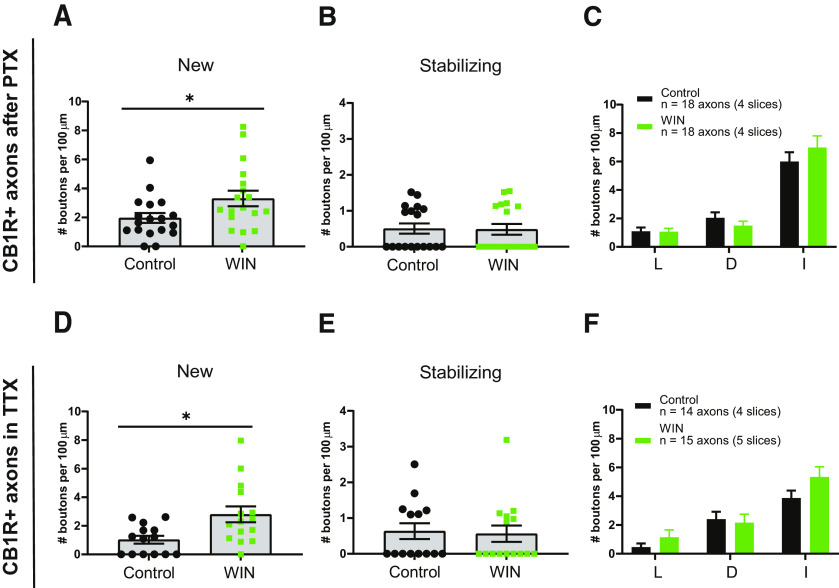Figure 7.
CB1-mediated bouton formation does not require Gi/o signaling and is independent of activity. A, Mean density of new boutons in CB1R+ axons after control (black) and WIN (green) application in PTX-pretreated slices (MW test, p = 0.047). B, Mean density of stabilizing boutons in CB1R+ axons after control and WIN application in PTX-pretreated slices (MW test, p = 0.93). C, Mean density of other NP bouton subgroups in CB1R+ axons after control and WIN application in PTX-pretreated slices. L, Lost boutons (MW test, p = 0.82); D, destabilizing boutons (MW test, p = 0.37); I, intermittent boutons (MW test, p = 0.59). D, Mean density of new boutons in CB1R+ axons after control (black) and WIN (green) application in the presence of TTX (MW test, p = 0.013). E, Mean density of stabilizing boutons in CB1R+ axons after control and WIN application in the presence of TTX (MW test, p = 0.61). F, Mean density of other NP bouton subgroups in CB1R+ axons after control and WIN application in the presence of TTX. L, Lost boutons (MW test, p = 0.23); D, destabilizing boutons (MW test, p = 0.56); I, intermittent boutons (MW test, p = 0.16). Data in A–C from 18 axons in four slices with DMSO (control) application and 18 axons in four slices with WIN application. Data in D–F from 14 axons in four slices with DMSO (control) application and 15 axons in five slices with WIN application.

